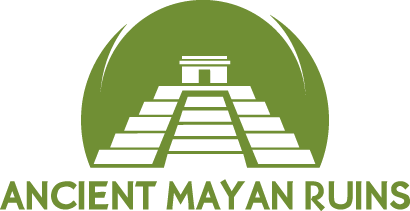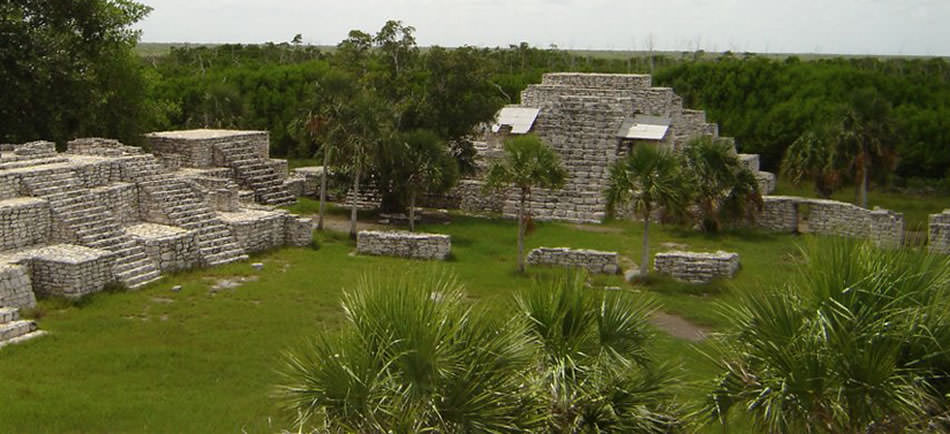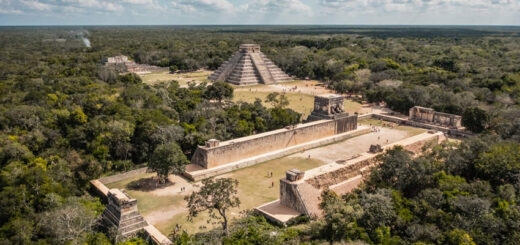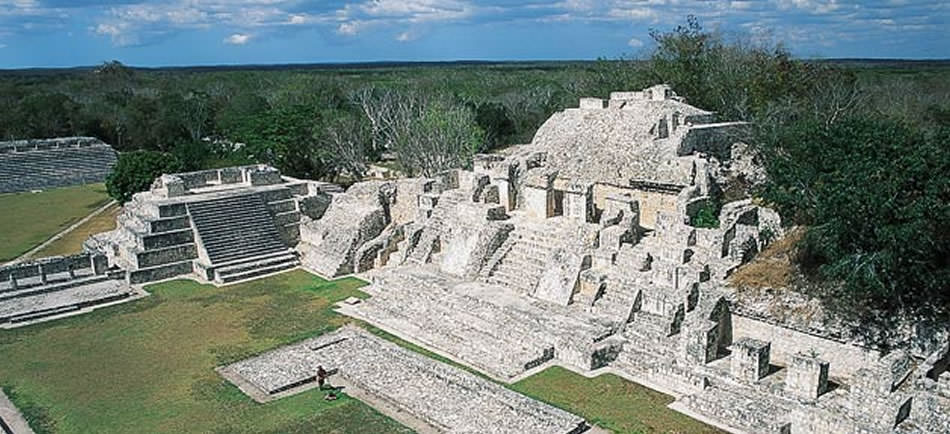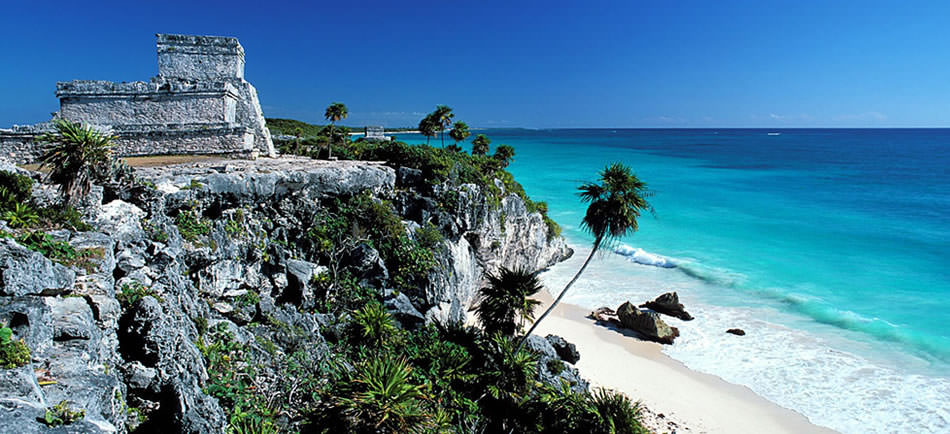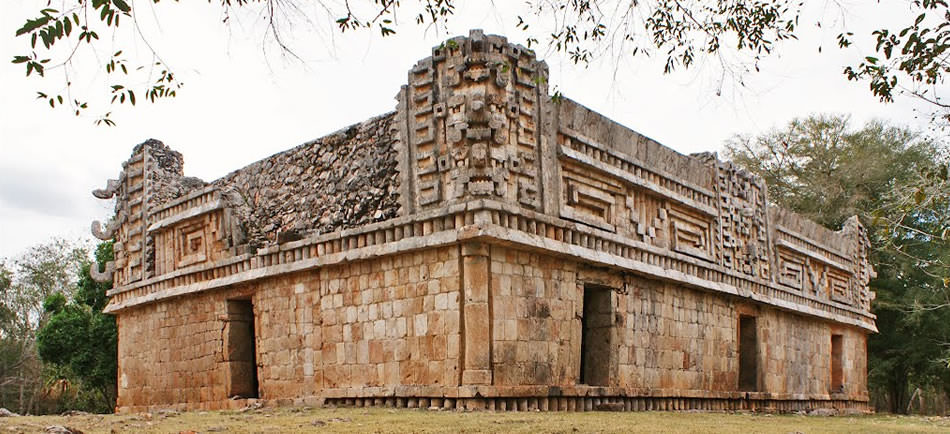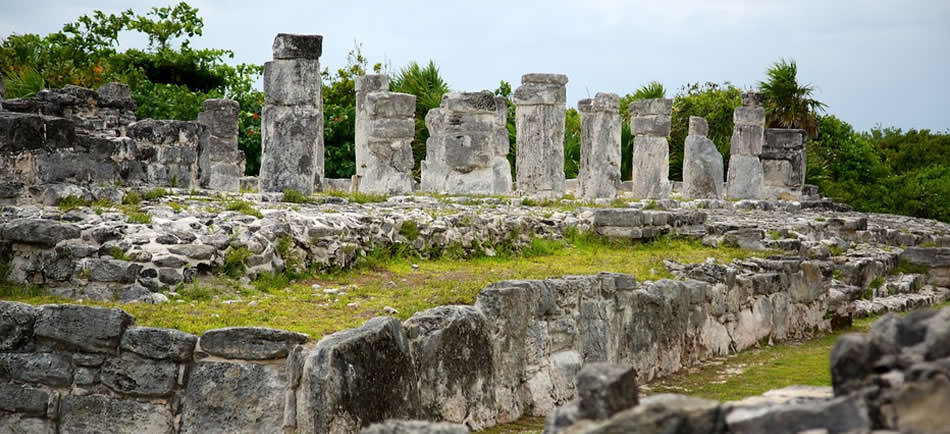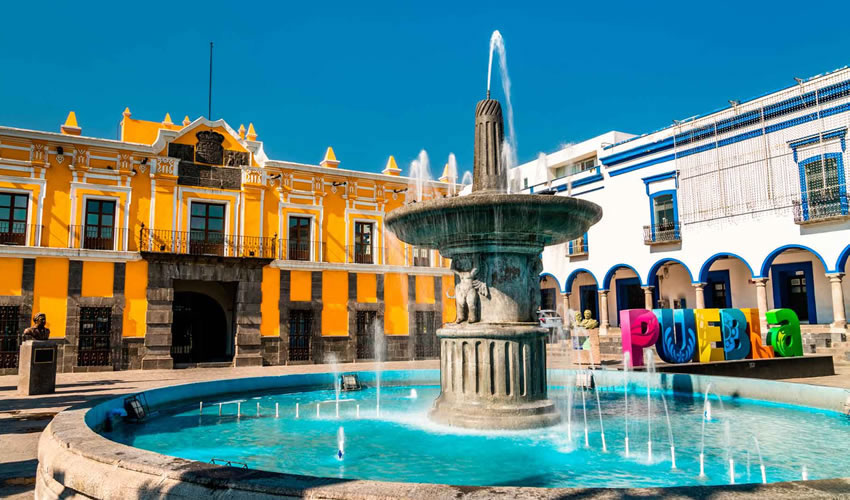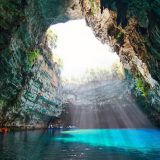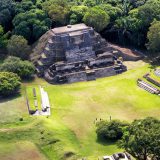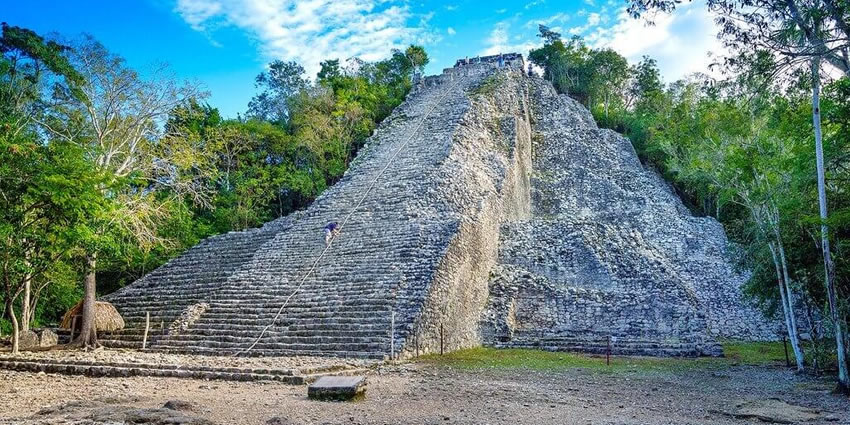
Cobá
Cobá is a sprawling archaeological site nestled in the heart of the Mexican state of Quintana Roo. Once a major city of the pre-Columbian times, Cobá offers visitors an unforgettable glimpse into the ancient rich history.
Cobá holds its charm and significance, offering a unique experience.
Unlike the more crowded sites, Cobá’s remote location allows for a more intimate exploration experience. Admire the towering pyramids and wander through lush jungle paths, like an adventurer discovering a lost world.
The Nohoch Mul pyramid, the tallest in the Yucatán, stands at 42 m. The site also features two well-preserved ball courts and numerous stelae, some depicting female rulers, hinting at the city’s complex social structure.
Cobá is a fascinating destination for those interested in Mayan history and archaeology, which offers a serene and immersive experience, making it a perfect addition to any travel itinerary in the Yucatán Peninsula.
Cobá offers a unique blend of history, adventure, and natural beauty. Its relative seclusion compared to other Mayan sites ensures a more tranquil and immersive experience, making it a hidden gem worth exploring.
Geography and Environment
Located approximately 40 km west of the Caribbean Sea, Cobá is set around two picturesque lagoons. The site is famous for its extensive network of white roads, which connect the central ruins to smaller outlying sites.
These elevated stone and plaster roads stretch over 100 km to the site of Yaxuna. The jungle surrounding Cobá is vibrant, teeming with wildlife and dense vegetation, giving visitors a sense of the region’s natural beauty.
Best Time to Visit Cobá
The best time to visit Cobá is during the dry season, from November to April. During these months, the weather is cooler and more comfortable for exploring the ruins and climbing the steep pyramid steps.
The wet season, from May to October, brings higher humidity and occasional heavy rains, which can make the jungle paths muddy and more challenging to navigate.
Visit the site in the morning or late afternoon to avoid the midday heat.
History and Chronology
Cobá was one of the largest and most powerful cities in the northern Yucatán Peninsula.
It flourished between 500 and 900 AD, boasting a population of over 50,000 inhabitants at its peak. The city’s strategic location allowed it to control vast farmlands, critical trading routes, and abundant water resources.
Cobá’s influence extended to major Maya city-states in Guatemala and southern Campeche.
Cobá Archaeological Zone
Nestled amidst the lush jungles, Cobá is dotted with numerous structures. The Cobá Archaeological Zone is centered around two large lagoons and spans approximately 80 sq km.
The site is characterized by its vast network of white roads, which radiate from the central area to connect various smaller settlements. The most notable white road (sacbe) stretches over 100 km to the site of Yaxuna.
Important Structures
Nohoch Mul Pyramid is the tallest pyramid in the Yucatán. It stands at 42 m high.
La Iglesia (The Church) is a pyramid-like structure, the second tallest in Cobá, which offers an example of Maya architecture. It stands near the entrance, greeting visitors with its impressive height and intricate stonework.
Conjunto de Pinturas (Group of Paintings) is a group that contains several small temples and a large platform adorned with colorful murals. These paintings offer a unique glimpse into the artistic expressions and religious practices of the ancient Maya.
The Cobá archaeological site features two well-preserved ball courts used for playing the traditional Mayan ballgame. These courts provide insight into the social and cultural life of the ancient Maya.
Macanxoc Group contains several carved stelae that depict important historical events and figures, including female rulers. The stelae provide valuable information about the political and social structure of Cobá.
Cobá is renowned for its extensive network, known as “sacbeob” (“white roads”). These ancient roads connect residential and ceremonial complexes, showcasing the city’s advanced infrastructure and strategic planning.
Coba Group is a cluster of structures includes residential buildings, temples, and platforms. The Coba Group provides a glimpse into the daily life of the city’s inhabitants and showcases the architectural diversity of the site.
How to get to Cobá Ruins?
The nearest towns and villages:
- Tulum is 44 km southeast of Cobá.
- Playa del Carmen is 100 km away.
- Cancun is 170 km west of the ruins.
Cobá is accessible by bus from Cancun, Playa del Carmen, or Tulum.
For more flexibility, consider renting a car, which allows you to explore the area at your own pace and visit the surrounding cenotes. The roads are well-maintained and easy to navigate, offering scenic views of diverse landscapes.
Nearby Attractions
A visit to Cobá is incomplete without a refreshing dip in the nearby cenotes. Cobá is surrounded by several cenotes, natural sinkholes filled with fresh water, which offer a refreshing break after exploring the ruins.
These natural sinkholes, filled with crystal-clear water, offer a perfect way to cool off after a day of exploring. Three notable cenotes are just a short drive away and provide unique swimming experiences.
Notable cenotes near Cobá include:
- Cenote Choo-Ha
- Cenote Tamcach-Ha
- Cenote Multum-Ha
Tourist Information
- Cobá Ruins are open from 08:00 to 17:00 daily.
- The last access: 16:00.
- The entrance fee is generally 75 MXN (2024).
Renting a bicycle or hiring a bici taxi can make it easier to explore the site.
What to bring and what to wear?
Bring water and snacks. Ensure you stay hydrated, as exploring the ruins can be physically demanding, especially in the heat. Light snacks or energy bars can keep you fueled during your visit.
Wear sturdy, comfortable shoes suitable for walking and climbing, as the terrain can be uneven. Opt for lightweight, breathable clothing to stay cool. Long sleeves and pants can also help protect against insect bites.
Protect yourself from the sun with a wide-brimmed hat and sunglasses. The area can have mosquitoes, especially during certain times of the year, so bring repellent to avoid bites.
Capture the beauty and history of the ruins, but remember to respect any rules regarding photography. Enjoy your exploration of Cobá Ruins, and immerse yourself in their fascinating history!
